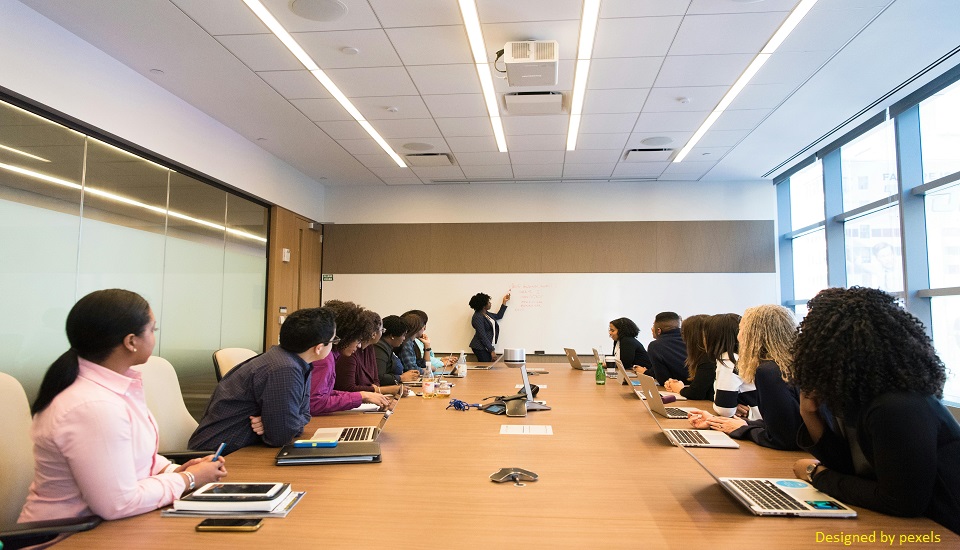
Workplace sensitivity training is your golden ticket to fostering an atmosphere of mutual respect and understanding in today's vibrant and diverse work environments. This training isn't just about following rules, it's about embracing the richness that different cultures, identities, and backgrounds bring to the table.
Diving into workplace sensitivity not only helps employees recognize their own biases but also shines a light on the importance of creating safe, inclusive spaces in any educational institute, where everyone can thrive together. Here, it's all about building trust and openness, laying the foundation for stronger team dynamics and impeccable professional relationships. Those educational leaders who have pursued courses like educational leadership and management online course, knows it really well.
If you also want to know what are the must-cover topics in your workplace sensitivity training, then we have got you covered.
So, without any further delay, let’s embark on the journey of enlightenment and empathy together!
7 Must Cover Essential Topics In Workplace Sensitivity Training
Let’s get to know the top 8 essential topics that you must cover in workplace sensitivity training in your institution:
1. Diversity, Equity, and Inclusion
In today's workplaces, diversity is more than just hiring people from different backgrounds, it's about recognizing the richness that various experiences and perspectives bring. Understanding diversity means appreciating the unique qualities of individuals from all walks of life. Equity goes a step further than equality, by acknowledging and addressing the different needs and circumstances of individuals to ensure everyone has fair access to opportunities. Sensitivity training empowers employees to appreciate and respect these differences, ensuring everyone's voice is heard and valued regardless of their race, gender, sexuality, or any other characteristic.
2. Bullying and Harassment In Workplace
Bullying in the workplace is more common than often acknowledged, and recognizing what constitutes bullying is crucial to eliminating it. It can be verbal, physical, or even covert, manifesting as exclusion or malicious rumors.
Sensitivity training provides employees with the tools to identify bullying behaviours and understand their detrimental impacts on individuals and the work environment. Recognizing these behaviours helps create a safer and more respectful workplace where such actions are swiftly addressed.
3. Ageism
Ageism in the workplace manifests through patronizing remarks towards older employees and underestimating younger colleagues. Age-related stereotypes can hinder workplace harmony and productivity, making it crucial to address these biases head-on in sensitivity training.
Providing technology and skills enhancement courses for employees of all ages ensures everyone has the tools they need to succeed. Sensitivity training should emphasize the importance of lifelong learning and adapting to change, helping employees feel more competent and confident. Investing in these opportunities shows a commitment to personal and professional growth, benefiting both the employees and the organization as a whole.
4. Allyship
An ally is someone who supports and advocates for marginalized groups, using their privilege to amplify the causes of those less represented. This could include supporting women, people of color, individuals with disabilities, the LGBTQ+ community, and those with low incomes.
The role of an ally is not just about tolerance but taking active steps to listen, learn, and address discrimination and bias. Allies are crucial in creating a work environment where everyone feels secure and valued, and they play a significant part in ensuring equitable treatment throughout the organization.
Supporting Marginalized Groups
Supporting marginalized groups involves more than just standing on the sidelines. It's about actively engaging with these communities, understanding their unique challenges, and promoting inclusivity. This means addressing microaggressions when they occur and using your voice to highlight issues that marginalized individuals face.
Actions speak louder than words, so allies should ensure that policies and practices within the workplace are inclusive and equitable. In this way, allies contribute to a culture where diversity is not only accepted but celebrated.
Promoting Diverse Leadership
Promoting diverse leadership is fundamental to a thriving workplace. Allies play a pivotal role in creating pathways for minority individuals to ascend to leadership positions. This can be done by advocating for equal opportunities, participating in mentorship programs, and ensuring that talented individuals from all backgrounds are given a chance to lead.
Diverse leadership enriches any institution's culture, brings new perspectives, and enhances decision-making processes, benefiting the organization as a whole. Allies should actively work to remove barriers that minority groups face in climbing the success ladder.
5. Religion and Spirituality
In a diverse workplace, respecting religious rights is vital. Employees have the right to observe their religious practices, such as reading holy texts during breaks, wearing religious attire, and practicing daily prayers. Sensitivity training should encompass these rights, ensuring that everyone in the workplace respects differing religious practices and beliefs. By doing so, companies can foster an atmosphere of respect and understanding, where every individual feels comfortable practicing their religion, which is integral to their identity.
Institutional Guidelines and Support
Institutions should develop guidelines that support religious and spiritual practices. This includes implementing policies that accommodate religious observances and ensuring that these policies are communicated clearly to all employees.
Providing a supportive environment means acknowledging and catering to the diverse spiritual needs of employees, which can significantly enhance their job satisfaction and overall well-being. Companies that support religious diversity often see improved morale and stronger employee loyalty.
Engaging Diverse Customers and Clients
Engaging with diverse customers and clients requires an understanding of their varied religious and spiritual backgrounds. For businesses, this means training employees to recognize and respect cultural and religious differences. Such training helps build stronger relationships with clients and offer services that resonate with their values. By doing so, companies can expand their reach and appeal to a broader audience, leveraging diversity to drive business growth and innovation.
6. Bystander Intervention
Bystander intervention is a crucial component of workplace sensitivity training. Employees often see or hear inappropriate behaviours that can range from subtle micro-aggressions to explicit harassment. Training individuals to be proactive bystanders ensures a safe and respectful work environment for everyone.
Recognizing Inappropriate Behaviour
Recognizing inappropriate behaviour forms the backbone of effective bystander intervention. Employees must be able to identify actions or comments that constitute harassment or discrimination. This involves being aware of verbal remarks, body language, and even social media interactions that express prejudice or bias. Sensitivity training should aim to enhance this recognition by discussing real-world examples and fostering awareness of the subtle nuances of unacceptable behaviour.
Strategies for Intervention
When a problematic situation arises, knowing how to intervene effectively is key. Employees need practical strategies that allow them to address inappropriate behavior without escalating the situation. In sensitivity training, participants can learn how to:
7. Promoting Accountability
Promoting accountability ensures that inappropriate behaviours are addressed and resolved systematically. Employees should know the mechanisms for reporting misconduct within the workplace and be assured that their concerns will be taken seriously.
Sensitivity training emphasizes the importance of documenting behaviours and following established protocols to maintain an environment where all team members uphold the workplace's values and standards. Encouraging employees to take ownership of their reactions to what they witness fosters a culture where no misconduct goes unnoticed or unchecked.
Final Thoughts
Creating a non-discriminatory and empathetic work environment is not just beneficial, it's essential! Workplace sensitivity training enables employees to confront and correct their unconscious biases, leading to healthier work relationships. This training helps reduce instances of ageism, racism, bullying, religious bias, and harassment.
Moreover, fostering allyship can support marginalized groups as they strive to achieve leadership positions. Finally, empowering all employees to intervene and report negative incidents encourages accountability, ensuring that no misconduct goes unnoticed.
By embracing these principles and by pursuing courses like educational leadership and management online courses, institutional leaders can enhance inclusion and equity in the workplace, allowing all employees to feel secure and fully express themselves.
We believe education should be accessible to everyone. That’s why we don’t charge for our blogs. Find the right course that will help you in your career with us, contact us at +95- 4420755/ 4437527. You can mail us at act@asiancollegeofteachers.com.







